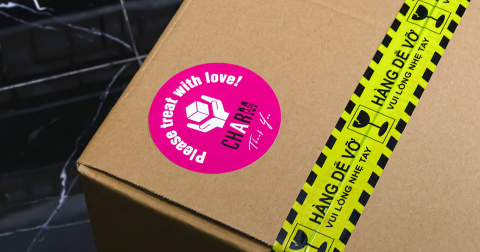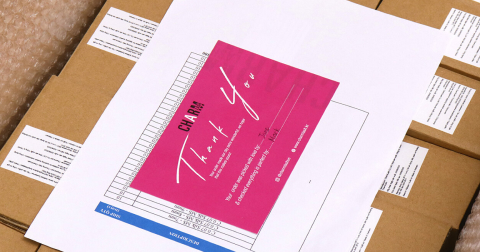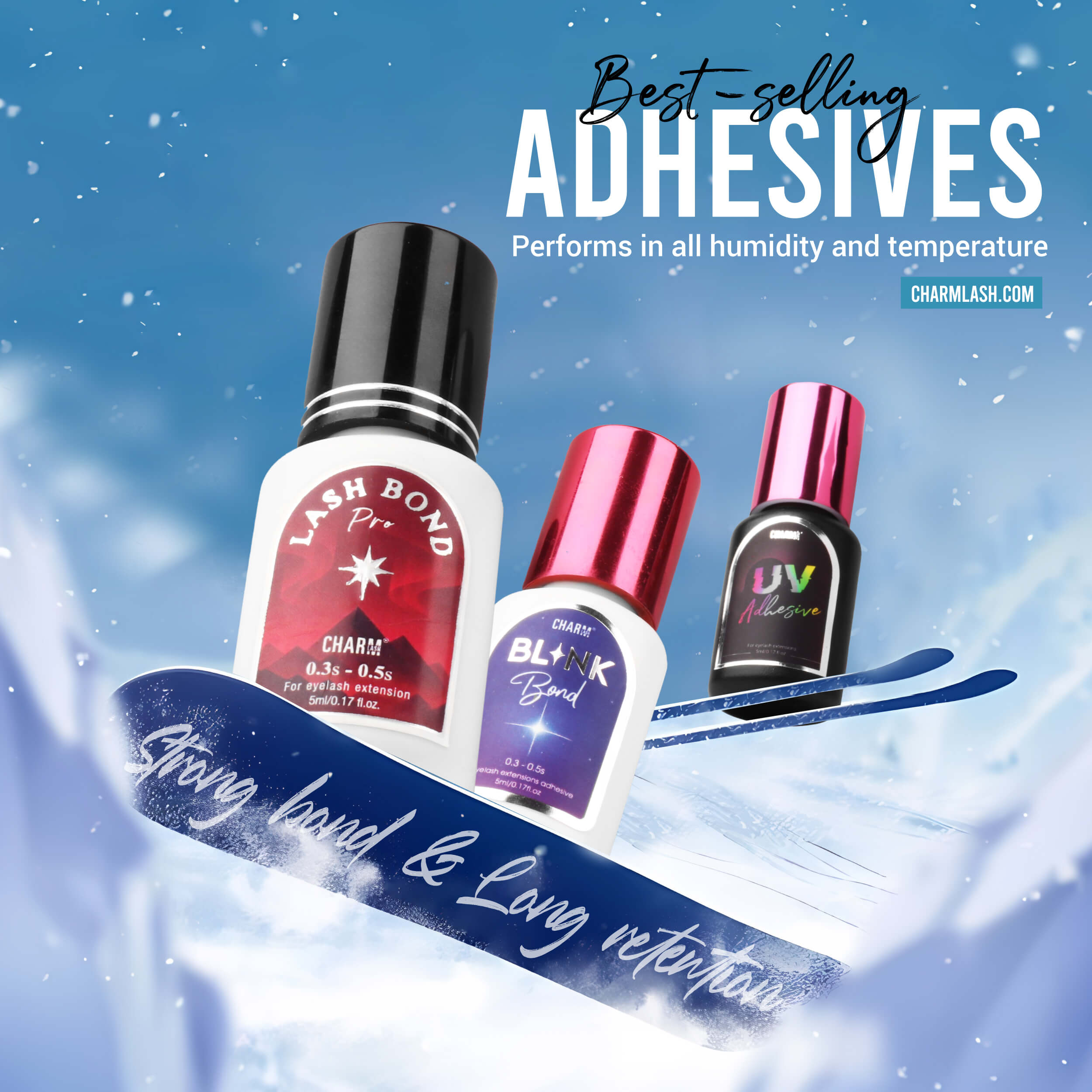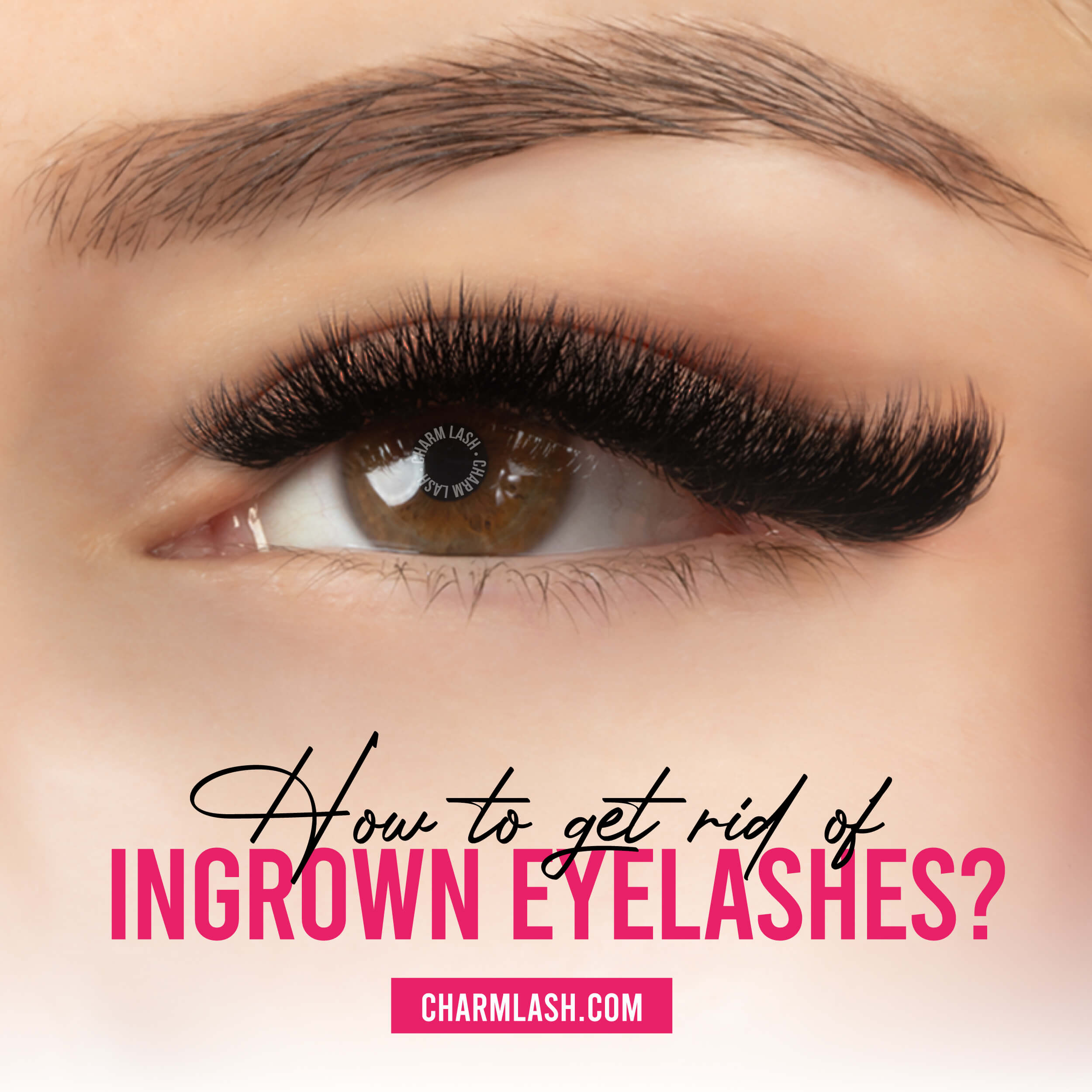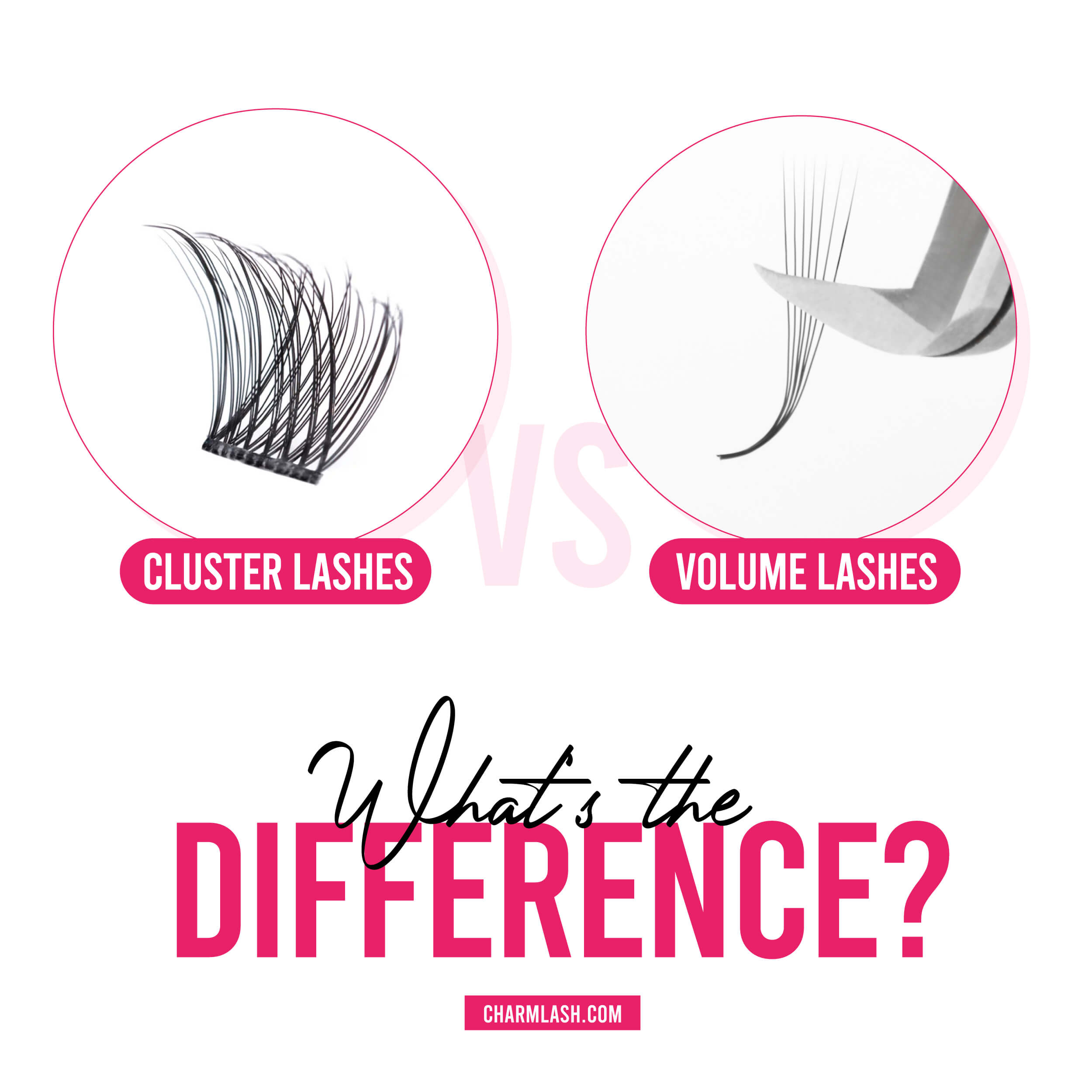When it comes to lash extension success, it’s not just about the lashes—you also need to understand lash adhesive viscosity. This one factor can make or break your application speed, retention quality, and client satisfaction. Knowing the difference between high and low viscosity adhesives will help you work smarter—not harder.
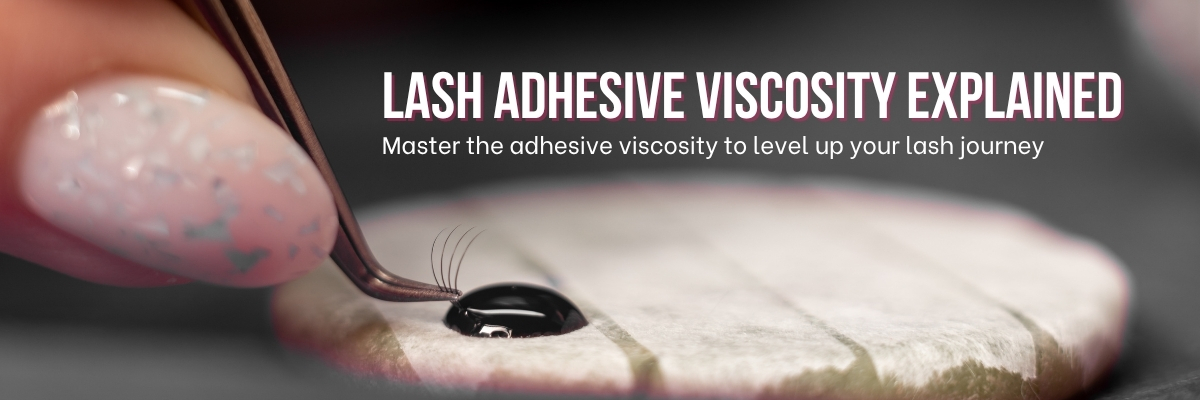
Viscosity refers to the thickness or thinness of a liquid, which determines the texture of the lash adhesive and its ease of flow. This directly influences the quality of the lash set and client retention experience, impacting glue pickup, drying speed, and bonding strength.
In this blog, we’ll break down what lash adhesive viscosity means, how it affects your lash glue’s performance, and how to choose the right type for your lash style and working speed. If you’re a lash brand or salon looking for a private label lash glue supplier, this guide will also help you know what to ask for when choosing formulas.
A. Must-know for all lash artists: FDA Regulations & Lash Adhesive Safety
For all lash artists and brand owners, understanding the regulatory landscape is paramount for safety and compliance. The U.S. Food and Drug Administration (FDA) considers false eyelashes, lash extensions, and their adhesives to be cosmetic products and, as such, they must adhere to the general safety and labeling requirements for cosmetics.
It is important to note the following:
- The FDA does not pre-approve individual cosmetic products, but products sold in the U.S. must meet the standards set by the FDA.
- Under the Modernization of Cosmetics Regulation Act of 2022 (MoCRA), there are new requirements for cosmetic product facility registration and product listing.
- Lash artists should always check product labels for ingredients and avoid known allergens like formaldehyde, parabens, and latex to minimize risk.
You can find more detailed and current guidance on cosmetic safety and regulations directly on the official FDA website.
B. What is viscosity in lash glue?
Viscosity refers to how thick or thin a liquid is. In lash adhesives, this determines how easily the glue flows, how much it sticks to the lash, and how quickly it dries. It’s commonly measured in centipoise (CPS). The higher the CPS, the thicker the glue.
Think of it like this:
- Low viscosity adhesive: Flows easily, like water
- High viscosity adhesive: Thick and slow-moving, like honey
- Medium viscosity adhesive: A balanced texture, easy to control
The viscosity of adhesives plays a key role in:
- Glue pickup from the drop
- Speed of application and drying
- Bonding strength and retention
Viscosity is not just about texture—it directly influences the quality of the lash set and client retention experience.
Read more about adhesive drying time and how viscosity plays a role.
C. Choosing the right lash adhesive viscosity: thin, medium, or thick?
Each lash artist has different needs. Let’s explore how adhesive viscosity can work for you depending on your skill level, lash style, and environment.
1. Thin viscosity lash glue
Thin lash glue, also called low viscosity adhesive, is fluid and fast-moving—think of the texture like water. With a viscosity range typically around 100–150 centipoise (cPs), this glue is designed for speed and precision and often found in fast-drying lash adhesives. This type of glue is ideal for professionals who want to move quickly and maintain lightweight, airy lash sets. However, it demands precise timing and good environmental control.
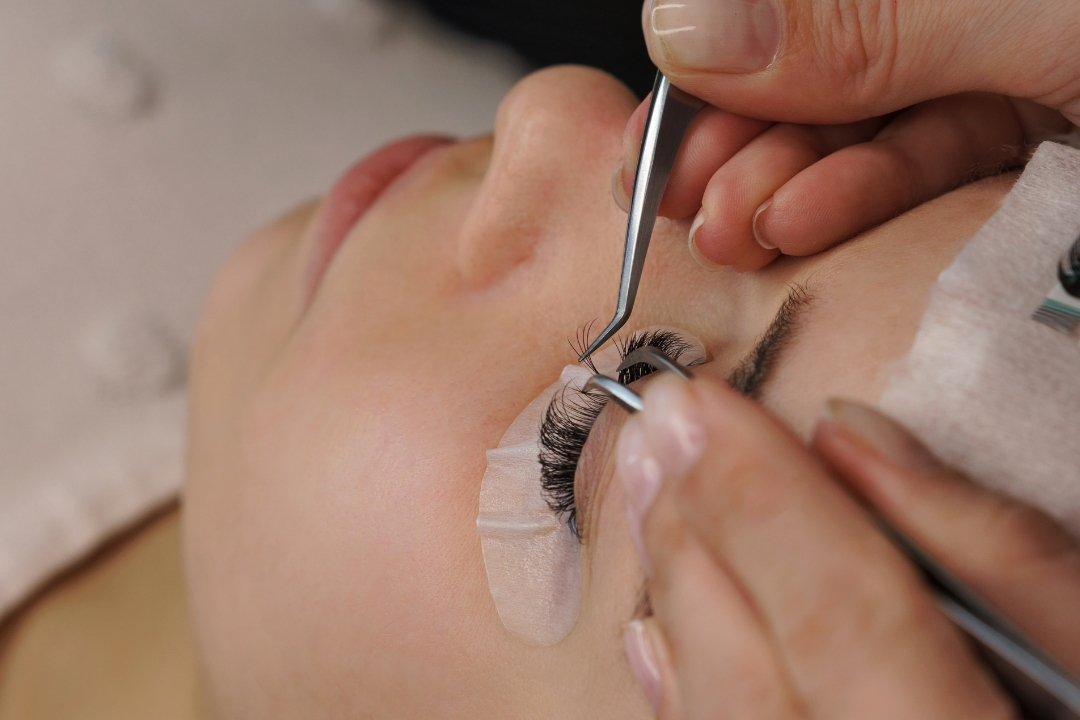
Best for:
Lash artists with fast hand speed
Classic lash extensions or volume sets (only handled by experienced lash techs)
Humid climates (reduces the risk of shock curing)
Clients with healthy, strong natural lashes
Cons:
Flows quickly and spreads easily
Bonds almost instantly (0.3-0.5–1 second dry time)
Produces thin, seamless bonds that look natural
Pros:
Hard to control for slower artists or beginners
Can lead to poor retention if not applied fast enough
Tends to run or drip if not dispensed properly
2. Thick viscosity lash glue
Thick glue, or high viscosity adhesive, feels dense—more like molasses or thick honey. It flows slowly and offers maximum control during placement. These adhesives typically measure above 200 cPs, though in the lash industry, anything above ~220 cPs is quite rare due to bonding limitations. Thick glue gives you time and control—perfect for volume artists, slower-paced techs, and clients needing stronger retention due to sparse lashes.
Best for:
Beginners who need extra time
Volume or mega volume fans (holds shape better)
Dry climates (slows evaporation, reduces premature curing)
Clients with sparse or weak natural lashes
Pros:
Flows slowly, doesn’t run easily
Drying time: 2–3 seconds (longer than thin glues)
Creates stronger, thicker bonds—great for retention
Cons:
Slower dry time can reduce speed
If over-applied, it may create bulky, visible bonds
Needs more precise pickup technique to avoid overloading the extension
3. Medium viscosity lash glue
This is the “all-around” option. Not too thin, not too thick—just right.
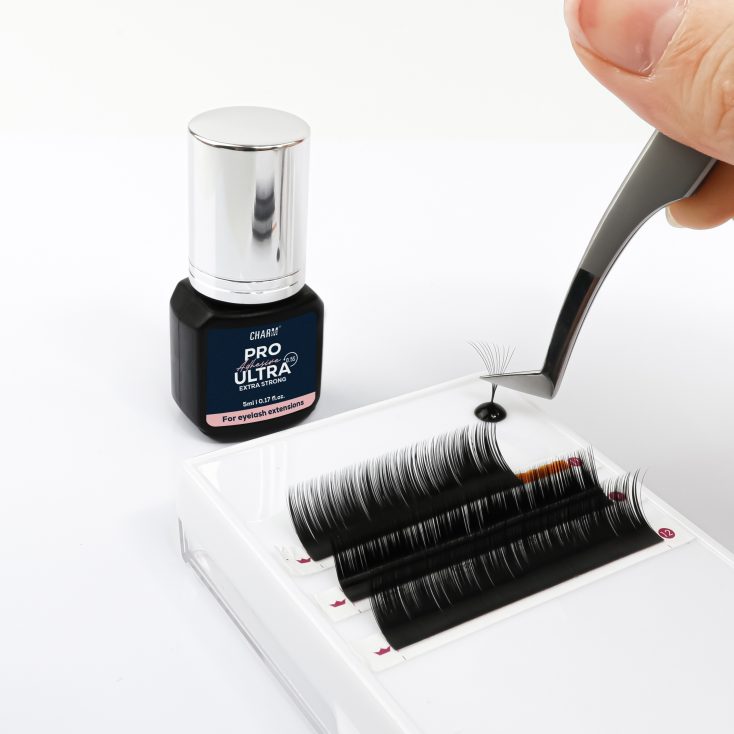
Best for:
- Moderate-paced lash techs
- Both classic and volume sets
- Variable studio conditions
Pros:
- Great balance between speed and control
- Adapts to changing room humidity
- Ideal for versatile lashing styles
Cons:
- Might not suit extremely fast or extremely slow artists
Check out our Standard-Drying Glue at Charmlash
D. Quick comparison chart: thin vs. medium vs. thick
| Feature | Thin Glue | Medium Glue | Thick Glue |
| Flow | Very runny | Balanced | Slow and dense |
| Drying Speed | Very fast | Moderate | Slow |
| Best For | Classic, humid rooms | Classic & Volume | Volume, dry rooms |
| Skill Level | Advanced artists | All levels | Beginners & pros |
| Retention | Natural, soft bond | Balanced | Strong, long-lasting |
| Best Lash Type | Healthy natural | All types | Weak, sparse lashes |
E. How does lash adhesive viscosity affect your lash sets?
| Viscosity | Retention & Bonding Strength | Drying Speed & Workflow | Adaptability to Humidity |
| Thicker Glue | Stronger, longer-lasting bonds | Slower (more forgiving) | Performs better in dry rooms |
| Medium Glue | Balanced performance for mixed techniques | Moderate and manageable | Adapts to moderate or fluctuating conditions |
| Thinner Glue | Lighter, more flexible bond (may require precision) | Ultra-fast (best for pros) | Works best in humid climates |
Tip: Always use a hygrometer to monitor temperature and humidity before lashing.
F. What affects lash adhesive viscosity?
Lash adhesive viscosity isn’t just about formulation—it can be influenced by multiple external and internal factors. Here’s what every lash artist or brand owner should understand to ensure consistency, control, and performance.
1. Adhesive quality: Not all glues are created equal
The quality of raw ingredients plays a big role in how your adhesive behaves. Lower-grade lash glues are often made with less refined materials that can affect viscosity and overall performance.
- Less pure cyanoacrylate may cause the glue to thicken unpredictably, shortening shelf life and usability.
- Poor-quality carbon black settles quickly, resulting in uneven textures that require extra shaking to mix.
- Low-grade PMMA (the ingredient that gives glue its flexibility) can clump or separate, making the adhesive gloopy and hard to work with.
If your glue often feels inconsistent or thickens quickly—even when new—it might be time to assess its ingredient quality.
2. Temperature: A major player in glue behavior
Temperature fluctuations can have a big impact on viscosity. Here’s a general rule:
- Cool environments (under 16°C) will thicken your glue, making it harder to dispense or wrap around natural lashes.
- Warm environments (above 24°C) can make glue runny and harder to control.
Example: If your glue feels thicker than usual on a cold morning, warming it slightly to room temperature can help restore its normal flow. Some lash artists use a temperature-controlled glue box for consistent performance.
3. Improper mixing
Most black lash glues contain carbon black pigment, which tends to settle at the bottom over time. If not shaken properly, your adhesive can become thick, stringy, or uneven.
- Manual shake: 1–2 minutes
- Electric shaker: 10–15 seconds
Always shake your glue before use—even between clients—for the best results.
4. Product interaction can change glue behavior
Using certain prep products like primers or accelerators on the lash strip can cause the glue to thicken too quickly during pickup. You might notice it turns gloopy or hardens on the lash strip faster than expected.
This isn’t always due to the glue itself—but the way it interacts with other ingredients.
5. Storage matters more than you think
Adhesives stored outside of the ideal range (usually 5°C to 15°C for unopened bottles) can change in viscosity and lose effectiveness over time. Here’s what to do:
- Unopened glue: Store in the fridge (optional), then bring to room temperature before opening.
- Opened glue: Keep in an airtight container in a cool, dry place.
And always keep adhesive away from direct sunlight, heaters, or lash glue fumes.
Want to explore private label options? Get in touch with us.
G. Best practices to maintain ideal viscosity
- Keep room temp between 16–24°C
- Shake before each use to prevents pigment separation and gloopiness
- Store properly in cool and dry place
- Choose high-quality glue. Better ingredients = better consistency & retention
H. A tip for suppliers: Work with a partner that understands viscosity
If you’re a lash brand looking to create or private label your own adhesive, understanding the lash adhesive viscosity chart will help you work with manufacturers more effectively. At Charmlash, we focus on manufacturing eyelash adhesives using high-purity cyanoacrylate and stable, lab-tested ingredients to ensure consistent viscosity and safe performance. Whether you’re a lash artist or looking to launch your own private label glue, we recommend choosing adhesives that are formulated for reliability, not just price.
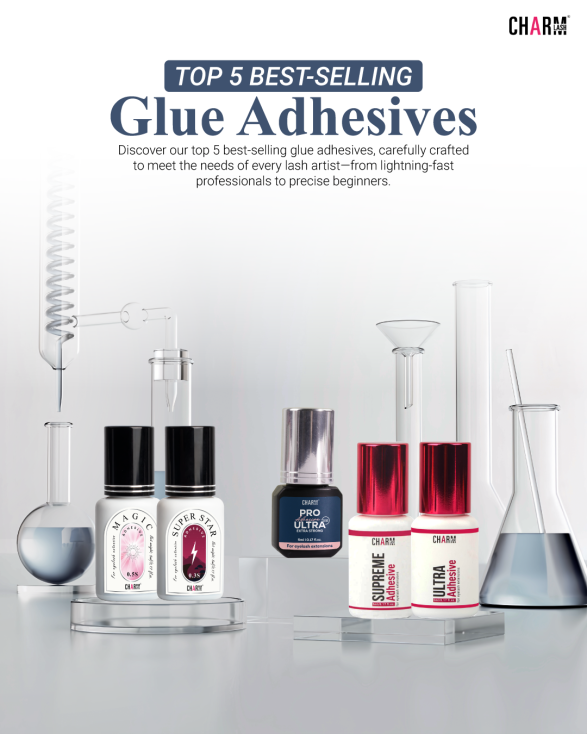
Final thoughts
Choosing the right lash adhesive viscosity isn’t just a preference—it’s essential for smooth application, strong retention, and happy clients.
- Low viscosity adhesive: Great for speed and classic styles
- High viscosity adhesive: Ideal for control and volume work
- Medium viscosity: Perfect balance for all-around use
Still not sure which glue fits you? Explore our lash adhesive range here, or follow us on Instagram @charmlashvn for real-time tips and tutorials.








